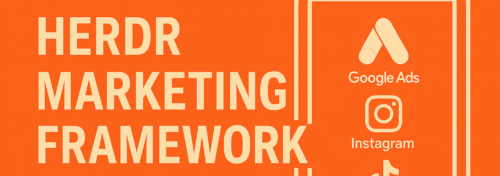The Hook Model: Building Habit-Forming Products

The Hook Model, developed by Nir Eyal in his book Hooked: How to Build Habit-Forming Products, is a behavioral design framework that explains how products can create habits through repeated engagement loops. This model is particularly useful for businesses looking to build products that captivate users, encourage frequent use, and drive long-term customer loyalty.
This article explores the four stages of the Hook Model—Trigger, Action, Variable Reward, and Investment—and provides practical examples of how it can be applied.
What is the Hook Model?
The Hook Model describes a loop that consists of four steps designed to engage users:
- Trigger: Starts the behavior.
- Action: The behavior itself.
- Variable Reward: Reinforces the behavior with satisfaction or intrigue.
- Investment: Encourages users to commit resources that increase their likelihood of returning.
This cycle, when repeated, helps form habits.
The Four Stages of the Hook Model
1. Trigger: The Spark to Action
Triggers are cues that prompt users to take action. These can be:
- External Triggers: Notifications, emails, ads, or other external prompts.
- Internal Triggers: Emotional or mental states, like boredom or fear of missing out (FOMO), that drive behavior.
Key Question: What makes users want to engage with your product?
Example:
- Instagram: External triggers like push notifications alert users to new likes or comments, while internal triggers, like boredom, lead users to scroll through their feed.
2. Action: The Behavior in Response to a Trigger
The action is the simple behavior a user performs in anticipation of a reward. According to B.J. Fogg’s Behavior Model, the likelihood of action depends on:
- Motivation: The user’s desire to perform the action.
- Ability: How easy it is to perform the action.
- Trigger: The cue prompting the action.
Key Question: Is the desired action simple and easy for users to perform?
Example:
- Twitter: Users can compose a tweet in seconds by simply clicking the “Tweet” button, which minimizes effort and maximizes accessibility.
3. Variable Reward: The Reinforcement
Variable rewards tap into the brain’s craving for unpredictability and novelty. They keep users engaged by providing rewards that vary in type or magnitude, creating a sense of excitement and anticipation.
Types of Variable Rewards:
- Rewards of the Tribe: Social validation, recognition, or connection (e.g., likes, comments).
- Rewards of the Hunt: Material or informational rewards (e.g., discovering useful content).
- Rewards of the Self: Personal achievement or mastery (e.g., completing tasks).
Key Question: What keeps users coming back for more?
Example:
- YouTube: Users keep watching because they don’t know what intriguing video will autoplay next, providing both social and informational rewards.
4. Investment: Commitment for Future Returns
The investment phase occurs when users contribute time, effort, data, or money, increasing their likelihood of returning. Investments create a sense of ownership and set the stage for future triggers.
Key Question: What makes users invest in your product and come back?
Example:
- LinkedIn: Users invest time by building their profiles, expanding their networks, and endorsing others, making them more likely to return to maintain their professional presence.
Practical Application of the Hook Model
Case Study: Spotify
- Trigger: External triggers like notifications for new music releases and internal triggers like a desire for relaxation or focus.
- Action: Opening the app and pressing play.
- Variable Reward: Personalized playlists and recommendations (e.g., Discover Weekly).
- Investment: Users create playlists, like songs, and curate their libraries, embedding themselves deeper into the ecosystem.
How the Hook Model Drives Business Success
- Increased User Retention: Habit-forming products lead to frequent engagement.
- Reduced Customer Acquisition Costs: Loyal users drive organic growth through word-of-mouth.
- Sustainable Competitive Advantage: Habit formation creates switching costs, making it harder for users to abandon the product.
Ethical Considerations
While the Hook Model is a powerful tool, it should be used responsibly to avoid exploiting users’ psychological vulnerabilities. Businesses must balance user engagement with their well-being.
Example of Ethical Use:
A fitness app uses the Hook Model to encourage healthier habits by rewarding users for daily exercise while avoiding manipulative tactics.
Tips for Implementing the Hook Model
- Understand Your Audience: Identify their internal triggers and design around them.
- Simplify the Action: Reduce friction to make it easy for users to take the desired step.
- Incorporate Variability: Use unpredictable rewards to sustain user interest.
- Encourage Investment: Offer features that grow more valuable as users commit time or effort.
- Test and Iterate: Continuously refine the loop based on user feedback and data.
Conclusion
The Hook Model provides a structured approach to creating products that people love to use. By understanding user behavior and designing for repeated engagement, businesses can build products that not only capture attention but also deliver lasting value.
When applied ethically, the Hook Model becomes a tool for positive habit formation, driving customer loyalty while improving user experiences. Start incorporating the Hook Model into your product design process and turn occasional users into devoted fans.







